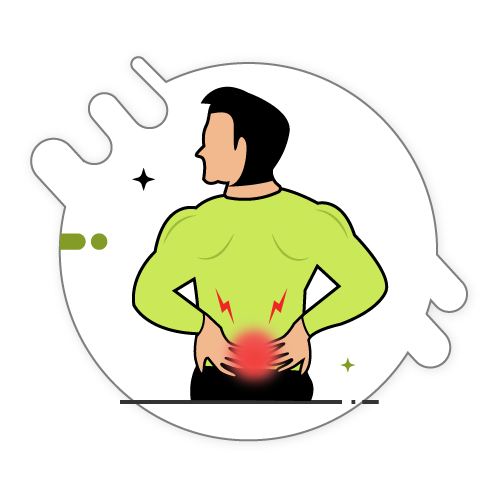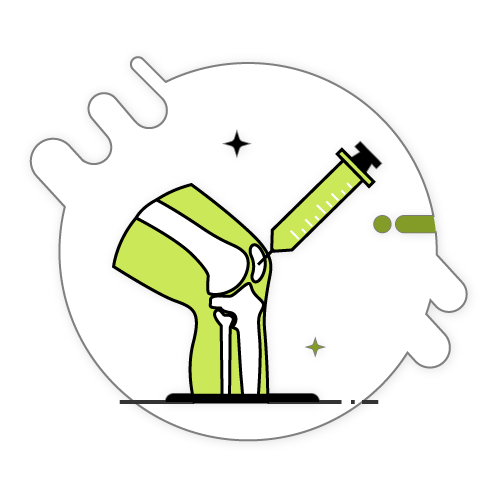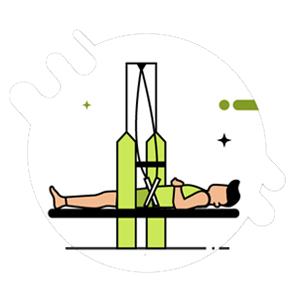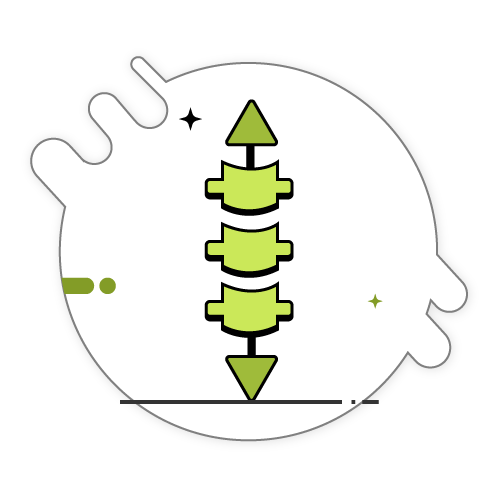Herniated Discs
Intervertebral discs or just “disks” are mostly cartilage pads that sit in between the vertebrae, or bones of the spine. These discs have a tough outer part and a gel-like inner core, like a jelly donut. Discs can herniate where the “jelly” partially extrudes beyond the out part that is supposed to contain it. This can happen suddenly due to a trauma or slowly over time.
Herniated discs can happen at any age but are more common with advancing age. Disc herniations can be a painful condition for any person. Depending on which disc is damaged, it can lead to a similar set of symptoms. For example, if the lowest nerve in the low back is irritated, it is called “sciatica”. This often send pain into the buttock area, back of the thigh, ther calf and even into the foot. Numbness and tingling is also frequent, most commonly in the toes, foot or leg. When other nerves are irritated it is often generically called radiculopathy or sometimes peripheral neuropathy.

Fun Fact
Other terms for herniated discs: ruptured discs, pinched nerve, slipped disc, and bulging disc.
Common Symptoms Associated with Herniated Discs
Regardless of the cause of the irritation, nerves are sensitive and can produce a variety of symptoms including:
 Pain into the arm or leg
Pain into the arm or leg Pain into the shoulder or hip
Pain into the shoulder or hip Numbness and/or tingling in the upper or lower extremity
Numbness and/or tingling in the upper or lower extremity Weakness in the hands or legs
Weakness in the hands or legs
Most of the time the symptoms are on one side. However, both sides can be affected and sometimes the symptoms can switch from one side to the other. Long standing nerve irritation from disc herniations can lead to muscle strength loss and even muscle wasting, where the muscles of the arm or leg become smaller due to a lack of nerve supply.
What Can be Done for Herniated Discs?
Herniated discs, like most other problems with the neck or low back, can respond favorably to chiropractic care and physical therapy. But before any care is provided it is obviously important to figure out WHY the symptoms are there. We start to figure out the cause of the symptoms we begin with a thorough history and examination. X-rays are also usually recommended and sometimes an MRI is necessary.
At Advanced Spine & Posture we use several things to help with the underlying disc herniation. For example, specific spinal adjustments can help the spine and relieve pressure on the disc. Stretching and manual therapy can help loosen up the tightened areas. Specific exercises can also help with disc herniations. We also commonly use spinal traction where devices stretch the spine and take pressure off the damaged disc.
Contact us to schedule a free consultation so we can begin to find the actual cause of the herniated disc symptoms you are feeling.
Contact Us Today!
Our comprehensive evaluation and custom treatment plans are designed to deliver results.
Don't wait. Schedule today!





